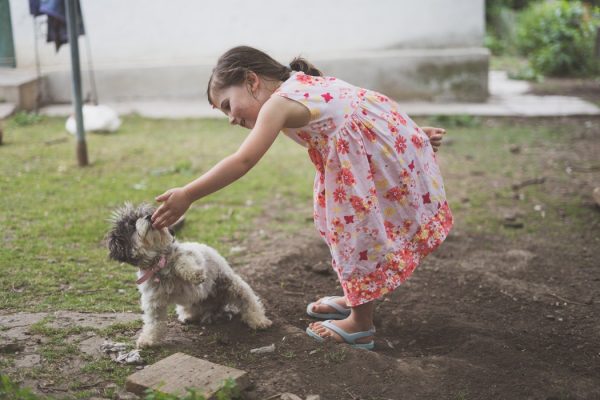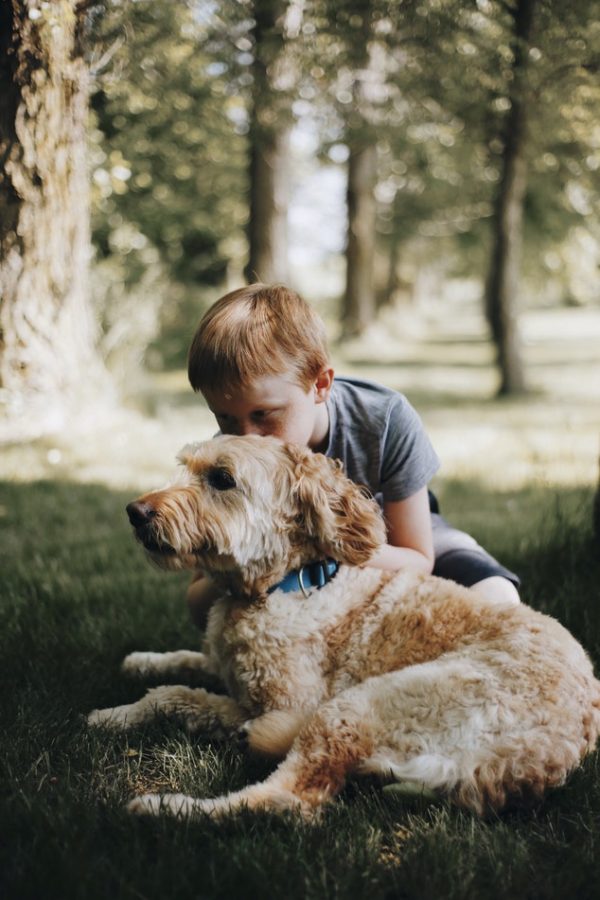As a parent or carer it’s important you put steps in place to ensure your child and your dog can live happily together. Making sure your young child knows how to behave around dogs is a valuable skill for them to learn in life.
Your children need to be taught that the puppy is not a toy or doll, and should not be disturbed when resting or sleeping, picked up, cuddled, hugged, kissed, carried around, or dressed up, all of which can make it grumpy and snappy.

In the house child safety with dogs
- Encouraging gentle interaction from your child is important; no pulling, grabbing, hurting or sitting on your dog
- Ensure that your toddler doesn’t attempt to snatch your dog’s toys. If the dog takes an item belonging to the toddler encourage him to exchange it for another toy or treat.
- Avoid your child wandering around with food or allowing your dog to beg at meal times
- Keep rules consistent, even for visitors. This will ensure quick learning from both the dog and your child.
Out and about dog safety
- Never allow your child to approach a strange dog. Teach your child from a young age that they must ask the owner before approaching a dog.
- Remember, not every dog is like your dog at home. Every dog is individual so they need to be treated like this. Not every dog has the opportunity to come into contact with young children and therefore may not know how to react around them.
- Supervise your toddler during doggy play time, as there is a higher risk of them being knocked over
- Keep your toddler safe in their pushchair by teaching your dog to walk calmly on a lead next to you, never tie the lead to the pram
- Avoid busy dog parks that may excite your dog or put your toddler at risk

Dog behaviour do’s and don’ts
Remember every dog is an individual. Knowing what your dog likes and dislikes will help keep them a happy and healthy member of your family.
Do:
- Give your dog quiet time. An indoor kennel or baby gate is a valuable tool. Your dog should always have a place away from the child they can retreat to should they feel they need too.
- Avoid ‘rough play’ with your dog as this may encourage unwanted behaviour, and teach them to play appropriately with toys
- Reward good behaviour and calm interactions
- Remember your dog has needs too – attention, walking and playing are key to their happiness
- Learn about your dog’s body language so that you can understand when he’s feeling relaxed and happy or tense and uncomfortable
Never:
- Leave your dog alone with your child, even if you just think it is a minute or two.
- Force a dog and toddler relationship, this will grow naturally over time
- Leave any doggy dangers lying around – nappies, small toys and certain foods can be hazardous
- Most dogs dislike close face-to-face contact, so keep faces away from the dog to prevent the possibility of a bite.


Join the conversation